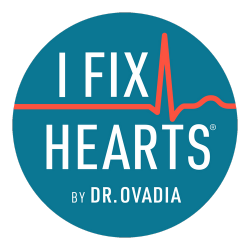A heart attack can feel like a world-ending emergency. Although 805,000 people experience one every year, it can still be an incredibly isolating medical event — and perhaps not something you thought would happen to you.
There are countless articles online explaining how you can avoid heart attacks. But now that you’ve experienced one and are looking to get back on your feet, you’ve probably seen far fewer articles explaining what you can do to recover.
I’m a heart surgeon — it’s my job to help people navigate cardiac conditions and recuperate from serious heart complications. After decades of helping people recover from heart attacks, I want to encourage you by saying there is hope for recovery.
Remember: if you think you’re currently experiencing a heart attack, contact 911 or your local emergency number right away.
7 steps to recover from a heart attack
I’ve performed more than 3,000 heart surgeries over my career.
I don’t want you to be next.
And the only way to make sure is to focus on full metabolic recovery — not just ‘heart attack recovery,’ which is often limited in scope.
You can look at your healing process through the seven principles of metabolic health:
- Reframe your recovery as a system or journey, not a final endpoint. You may recover from a heart attack and feel healthier than you ever have. Alternatively, you may struggle to get back on your feet or return to life before your event. Either way, you need to reconsider what recovery looks like for you and maintain a positive attitude. Ask yourself, ‘what can I do today that may bring me 1% closer to recovery?’
- Start eating whole, real food. This means throwing out processed meals, ditching surgery snacks, and avoiding PUFAs, fast food, and seed oils that could contribute to a second heart attack.
- Make sustainable changes at a steady pace. Diving into brand-new regimens may sound good on paper, but it could be difficult to maintain dozens of changes all at once. To avoid overwhelming yourself in the beginning, start with manageable baby steps instead. Maybe you want to cut soda out of your diet or eat 30 minutes earlier before bed.
- Exercise daily. The amount of exercise you can do after a heart attack varies with the severity of the attack, age, and exercise intensity, but you should still find a reason to move at least 30 minutes per day. Weightlifting is one of the best ways to build muscle and metabolically active tissue, but find resistance that’s challenging yet manageable. That can be doing lunges in front of the TV or doing push-ups against the wall, gradually working up as you get stronger. I recommend chatting with a metabolic health coach or doctor about specific exercises for your situation.
- Prioritize good sleep. Sleep allows your body to focus on the healing process, which is extremely important in the weeks after a heart attack. There’s no set number for what ‘good sleep’ looks like, but it should always leave you feeling refreshed and well-rested in the morning. Whether that’s six hours at 11 PM or eight hours at 9 PM, be sure to choose a rhythm and cadence that makes sense for you.
- Find a stress-relieving activity to enjoy. Your heart is in a very precarious place after a heart attack, and any amount of unnecessary stress could significantly limit your recovery. I suggest returning to old hobbies or picking up new ones. If possible, find a community within your hobbies to make connections and receive support.
- Partner with a doctor who takes an active role in your health. You should feel comfortable discussing your current health with your medical professionals and be confident they’re invested in your recovery. Find a doctor who gets it and is supportive of your lifestyle changes. Metabolic health coaching is a common avenue for many.
How to avoid a second heart attack
Your first heart attack may not always be your last.
You have a one in four chance of returning to the hospital for a second heart attack, and a 50% of not recovering from it at all.
Thankfully, focusing on metabolic health as a holistic process can put the odds in your favor.
To do this, you need to:
- Kick addictive habits like drinking and smoking. Combined, these habits increase your risks for premature heart disease (and second heart attacks) by a significant degree.
- Monitor your five metabolic health factors: waist circumference, blood pressure, blood sugar, cholesterol, and triglycerides. I recommend getting regular lab work to establish a baseline and keep an eye on your recovery.
- Consider adding periods of fasting to your diet. Not only is fasting associated with more positive outcomes after a cardiac event, but it’s also extremely useful for improving insulin sensitivity, which reduces your risk for a second heart attack.
If you’re interested in learning more about how to avoid a second heart attack, you can sign up for my heart attack recovery course to take at your own pace. I discuss how to best recover from a heart attack, then explore the steps you can take to stop a second heart attack from occurring.
